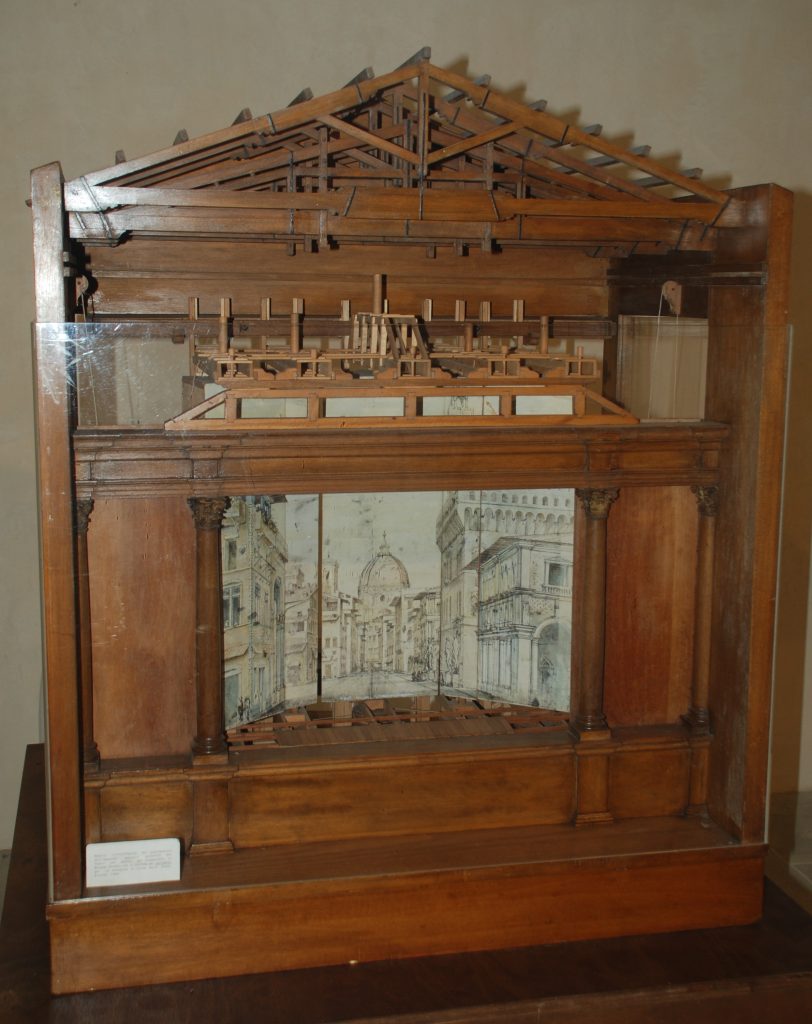- Home
- /
- Parco Mediceo di Pratolino
- /
- The Medici theatrical mechanisms...
- /
- The Medici theatrical mechanisms...

Salone dei Cinquecento in Palazzo della Signoria: The ‘Throne Room’
Interpretive model of the theatre created by Giorgio Vasari in 1569 in the Salone dei Cinquecento in Palazzo Vecchio in Florence.
Design and construction by Ferdinando Ghelli – 1980
Scale 1:20
This interpretive model of the stage designed by Vasari illustrates how scenes were changed, as the audience looked on, by rotating the periaktoi. These consisted of five elements, four of which were situated on vanishing lines; the fifth was frontal. Application of
the ancient periaktos device, high frameworks in the form of triangular prisms that each rotated on its own axis, the faces of which each represented a perspective view of each scene, were turned together with a single movement of a windlass under the stage floor for a rapid and simultaneous change of the whole scene setting (…).
Vasari’s introduction of scene changes was substantial and destined to remain the sole system for changing the scenes on Italian stages for a long time. Successively, this system was also applied, at least through the early decades of the 17th century, on stages in England and Germany.



